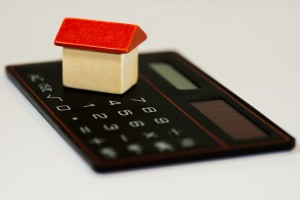Some people cry when watching sad movies, others cry when chopping onions, and yet there are others who tear up at the sight of acronyms involving real estate and taxes. If you’re the latter, throw out your tissues and hankies, because we’re going to explain RGPT in the simplest way possible, so keep calm and read on.
Budget 2019 Update: RPGT for citizens and permanent residents is raised to 5% (even after five years), while RPGT for companies, non-citizens and non-permanent residents in the sixth year and above will be raised to 10%
What is RPGT?
RPGT, short for Real Property Gains Tax, is a form of tax levied by the Inland Revenue Board (LHDN) on capital gains derived from the disposal of real property (land or building). Basically, it’s the tax derived from the profits of selling your property.
Wait, isn’t that a lot of money?
Sure, even a 1% tax on large sums of money is a lot, but RPGT isn’t just purely a percentage of your gross profit. There’s a bit of calculation to do, and we’ll make it as simple as possible to understand, just to cover the basics. First, you’ll need to know the tax rate (percentage).
What is the RPGT rate?
The RPGT rates are revised every year, and as of May 2015, the rates follow the ones as stated in Malaysia’s Budget 2014.
This means that if you sell your property within the first 3 years of buying it, you’ll have to pay 30% (that’s quite a lot) but if you sell it from the 6th year onwards, there’s no tax! Do note that there are different rates for companies and non-Malaysians.
This tax is the government’s way to deter people from ‘flipping’ property a.k.a. buying property and selling it off quickly at a higher price to make profit.
The time used to determine your RPGT rate is the date your property was acquired as stated in the Sale and Purchase agreement. So, if it is stated 1 May 2001 in the SPA, you will be taxed 20% (within 3rd year) for selling your property on 31 April 2004, instead of 15% if it is sold on 1 May 2004 (4th year).
Now we get to the *cough* good part, where there are lots of numbers and jargon. We’ve prepared an example to make it less painful.
Example time!
Laura purchased a terrace house for RM 200,000 in May 2000. She then sold the house for RM 400,000 in August 2004. She had spent a total of RM 40,000 in legal fees, real estate fees, administrative fees, and house renovations on the property.
RPGT is calculated based on your net chargeable gains; the profit (after fees and renovation) you see from selling your house is only the gross chargeable gains. In this case:
Gross chargeable gains
= (Selling price – Bought price) – (Legal fees, maintenance, renovations, etc)
= (400,000 – 200,000) – 40,000
= 160,000
Once you know your gross chargeable gains, you can calculate your net chargeable gains:
Net chargeable gains
= Gross chargeable gains – Individual exemption waiver (RM10,000 or 10% of chargeable gains, whichever is higher)
= 160,000 – (16,000)
= 144,000
*The individual exemption waiver (RM10,000 or 10% of chargeable gains) is a one-time only claim upon disposal of a private residence.
Laura sold her property in the 5th year of owning the house, so the RPGT rate imposed is 15%. Remember that the tax is based on your net chargeable gains, therefore:
RPGT tax amount that Laura has to pay
= 15% x Net chargeable gains
= 15% x RM 144,000
= RM 21,600
To sum it up, the RPGT tax amount that Laura has to pay for the sale of her property is RM 21,600.
So that’s how you calculate how much you have to pay in terms of RPGT taxes when you’re selling your property. It’s a good way to ensure that people buy property to stay, do business or invest in the long term (well, at least 6 years), instead of ‘flipping’ property just to make a quick buck.
Of course, the process of buying and selling your property probably isn’t going to be so easy, and you definitely won’t be calculating round numbers like these, but it’s a good start to understanding how RPGT works, and you’ll be able to explain it without getting confused yourself when others ask you about it.
References:
Ringgit Plus (link)
Hasilnet.org (link)
Savemoney.my (link)






